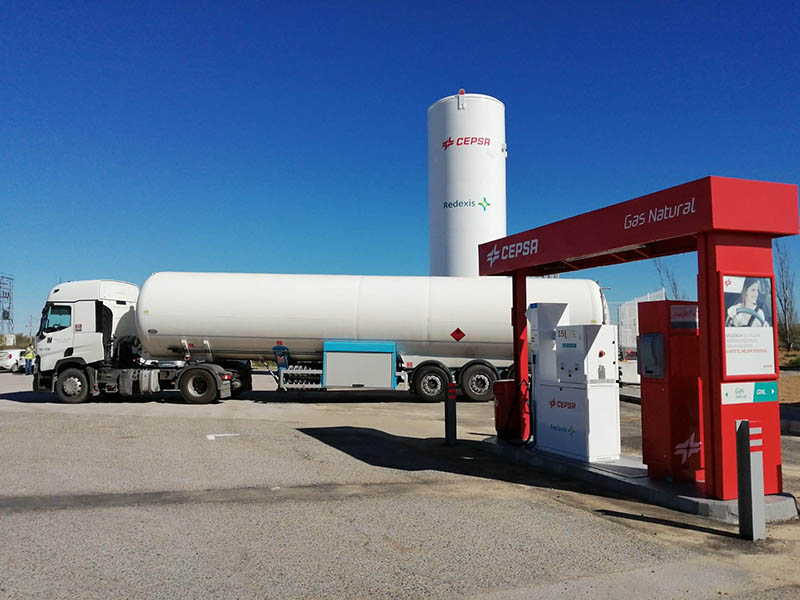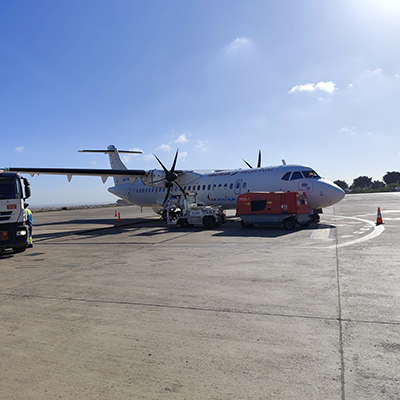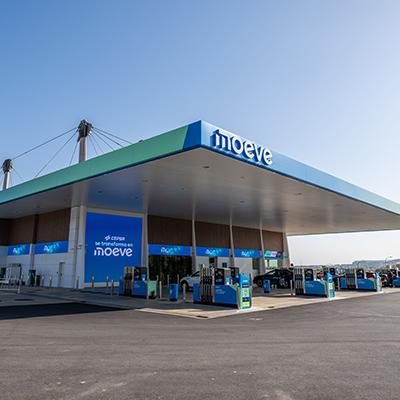- Cepsa's Service Station, located in Trujillo (Cáceres), has LNG facilities, for refueling of trucks, and CNG facilities for light vehicles
- This facility is located on the A-5 highway, which connects the southwest of Spain and Portugal with the center of the peninsula, and constitutes a strategic route for Portuguese transport to Europe
- The next stations that are already being worked on by both companies are located in Madrid, Cuenca, Jaén and Salamanca and are expected to start operating in the first six months of 2021
Redexis has made an investment of nearly one million euros to carry out the construction of this facility, which supplies both compressed natural gas (CNG) for light vehicles and liquefied natural gas (LNG) for heavy-duty transport. For both, the refueling time is between 3 and 6 minutes, depending on vehicle type.
The facility is located in Trujillo, a strategic location for the transport of goods through which more than 2,500 heavy vehicles circulate daily. It is connected to Badajoz and Madrid by the A-5 highway, to Cáceres by the A-58 highway and to Plasencia by the EX-208 highway. It is also a communications hub linking Portugal and Spain, and opens the exit route for Portuguese transport to the rest of Europe, connecting Madrid and Lisbon.
In the first few months of 2021, both companies plan to start up another four gas stations in some of the main national transport corridors; specifically, they will be located at Cepsa Service Stations in the provinces of Madrid (A-4), Cuenca (A-3), Jaén (A-4) and Salamanca (A-62).
Santiago Ruiz, director of the Cepsa Service Station Network, highlighted: "We are continuing to advance in the development of the largest gas mobility network in Spain with the implementation of gas stations in strategic locations for the mobility of our country. The diversification of our energy solutions offering for light and heavy transport is part of our contribution to the energy transition.”
For his part, Javier Migoya, director of B2B at Redexis, said: "From Redexis and together with Cepsa, we remain committed to the creation of the largest network of gas stations in Spain, building and developing the necessary infrastructure to promote alternative fuels in our country that promote a more sustainable, economical and environmentally friendly mobility".
In June 2019, Redexis and Cepsa agreed to create the largest network of LNG and CNG refueling stations in Spain, with the goal of expanding the supply of energy solutions and promoting sustainable mobility. In said agreement, Redexis committed to making an investment of 60 million euros in the 2019-2023 period to undertake the construction and maintenance of 80 gas stations located at Cepsa Service Stations, which Cepsa will be in charge of supplying and marketing.
Cepsa thus continues to expand its offering of energy solutions for transport at its Service Stations, where it also offers a variety of products and services. The company currently has more than one and a half million customers, of whom 300,000 are professionals, and has an extensive network of more than 1,500 Service Stations in Spain, based on a clear model of customer orientation, innovation, added value, safety, and loyalty.
Advantages of natural gas vehicles
Natural gas vehicles are a real alternative for sustainable transport, with low CO2 emissions that do not emit particles or sulfur oxides. Its implementation contributes to improving the air quality in cities and reducing noise pollution. VNG vehicles are just as safe and equally as powerful as other combustion engines.
They can also be driven in high pollution areas because their emissions allow their windshields to bear the Directorate General of Traffic (DGT) ECO sticker, which is a huge plus when driving through large cities with traffic restrictions in place. VNG vehicles are suitable for all types of mobility: urban, intercity or long-distance driving.
These vehicles are also competitive in cost since, in addition to benefiting from discounts and subsidies on the road tax, the use of VNG entails savings of 30% in cost per kilometer compared to diesel and 50% compared to gasoline, both for light and heavy vehicles. Gas models have an impressive range: they can travel up to 1,300 kilometers without refueling thanks to their bi-fuel gas/gasoline tanks.




